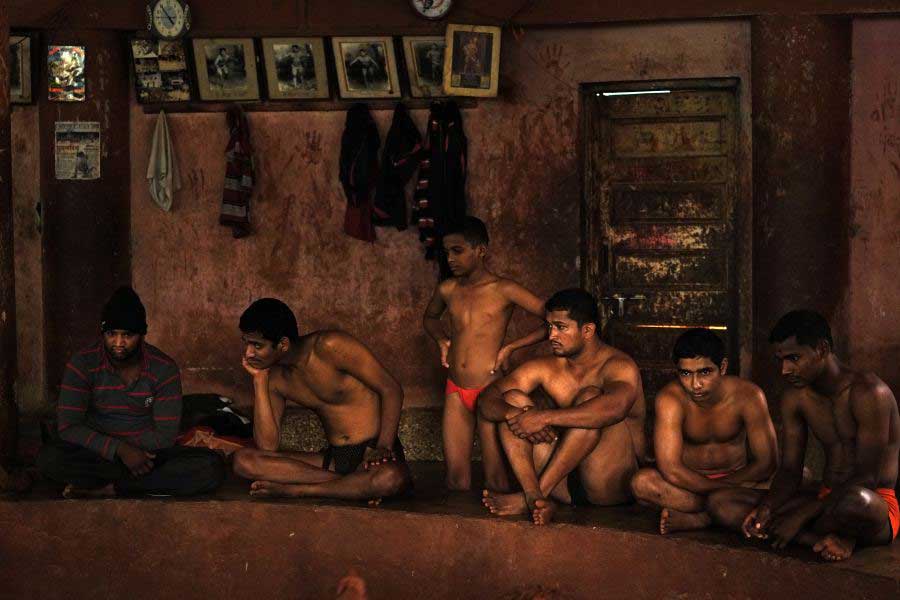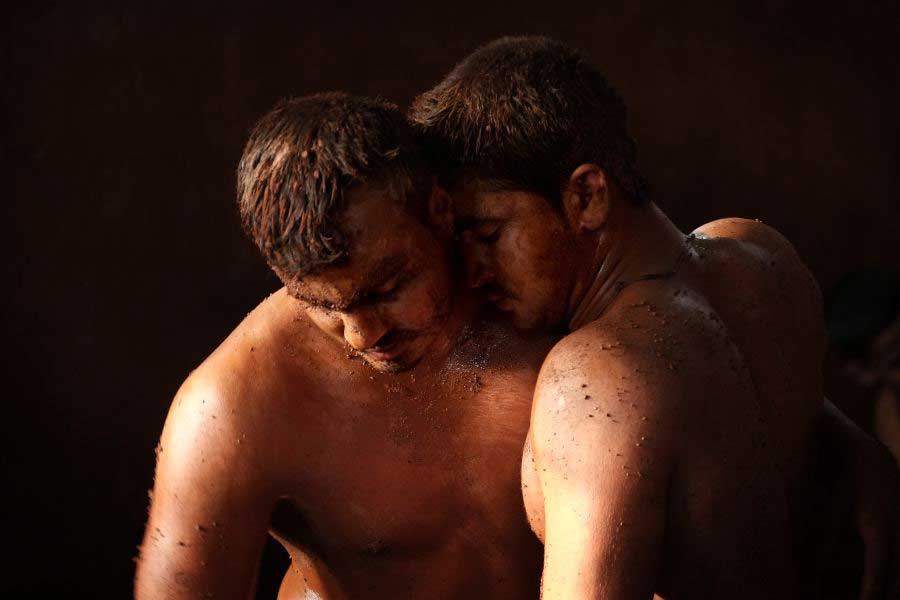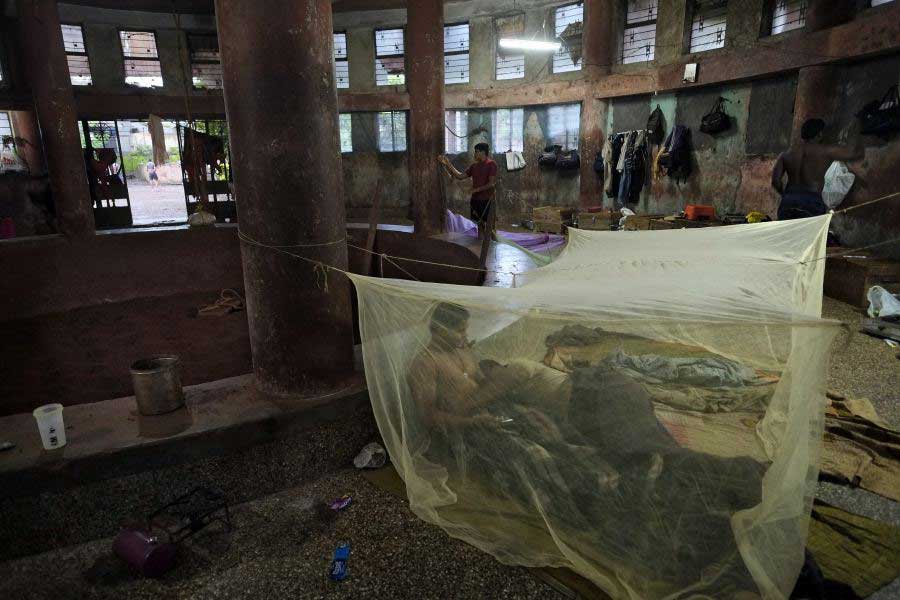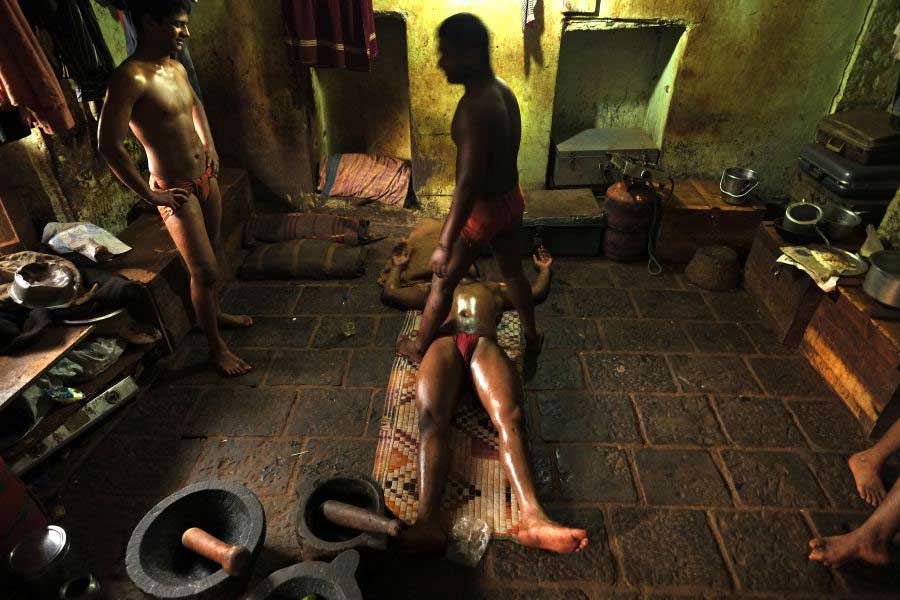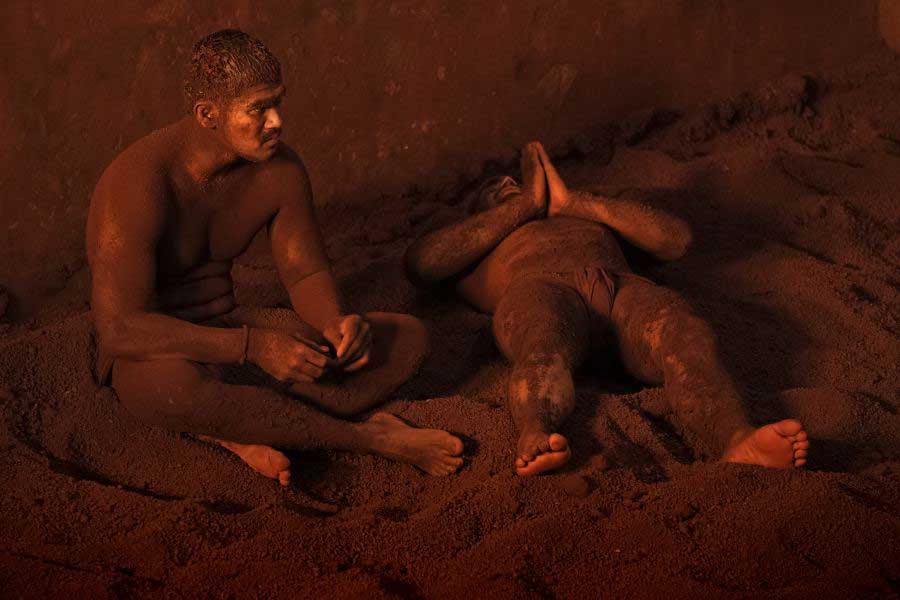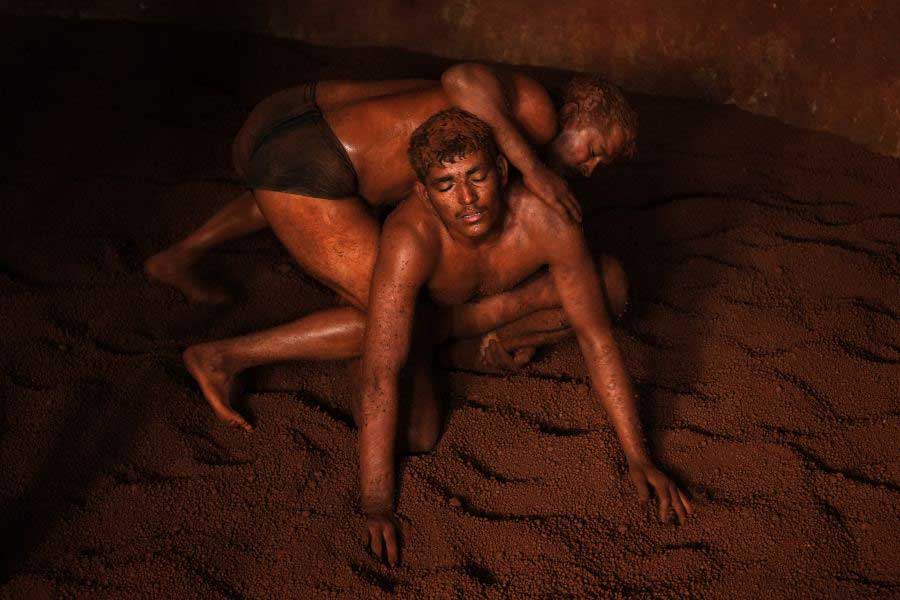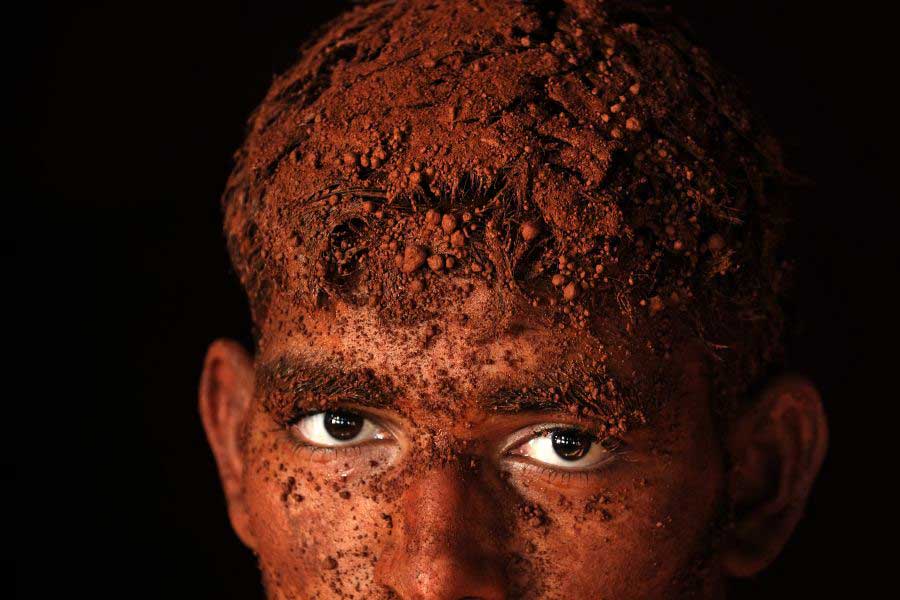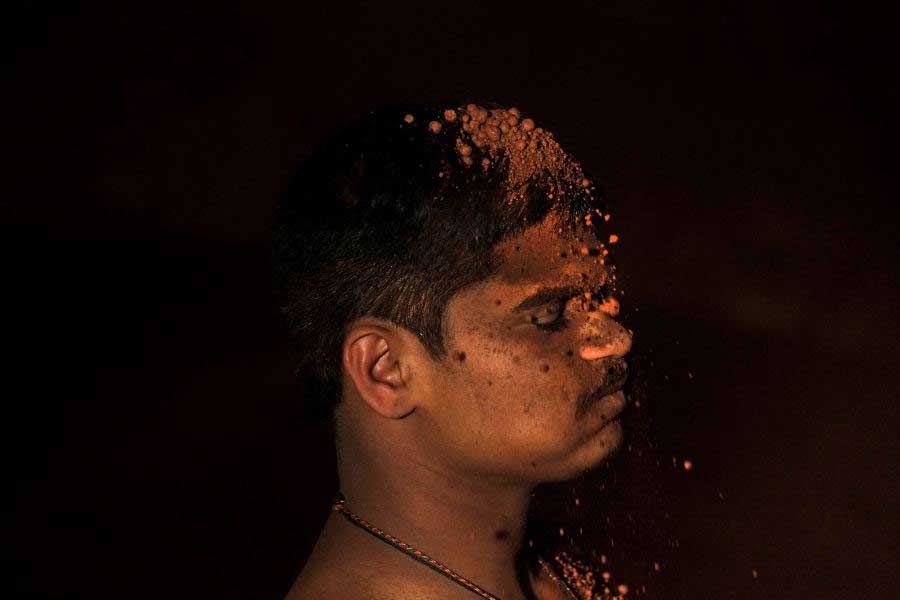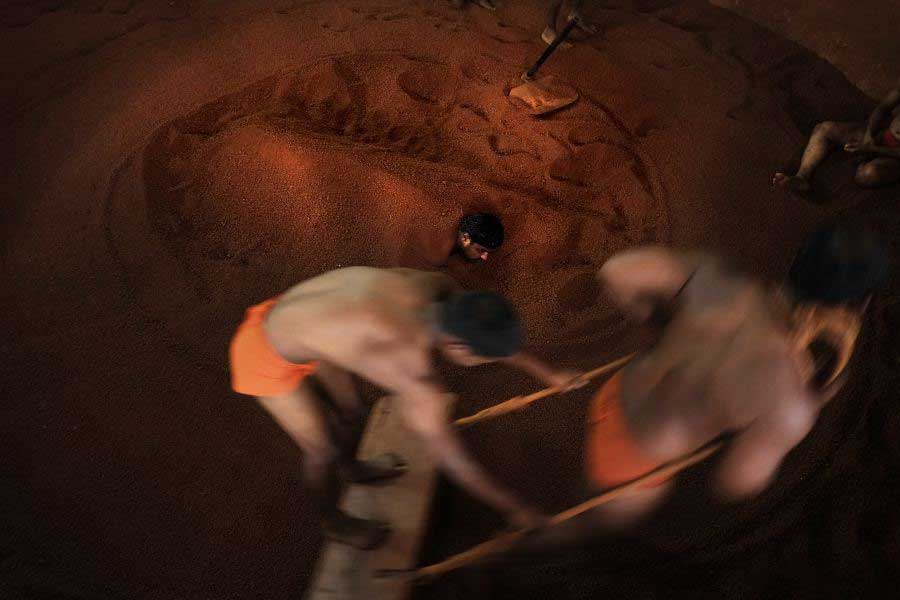Kushti is the traditional form of Indian wrestling established centuries ago in Persia. In vogue during the 16th century Mughal era, this art is practiced in a type of gymnasium called an Akhara.
Wearing only a well-adjusted loincloth (« langot »), wrestlers or « Pelwhans » enter a pit made of clay, often mixed with salt, lemon and ghee (clarified butter). This clay, representing Mother Earth is renewed every 2 years. Before every match, each wrestler covers the body of his adversary with this earth whose color varies by region (red in Kolhapur, yellow in Varanasi). During combat, the coated bodies meld with the color of the arena.
The rule for winning is simple. Both shoulders must be pinned to the ground. It is strictly forbidden to strangle or throw punches, yet the swollen ears of seasoned wrestlers are testament to the vigorous contact. The religious rituals of preparation are as important as the fight itself. Inside and around the arena, the statue of the monkey-god Hanuman is the object of litanies and daily prayers.
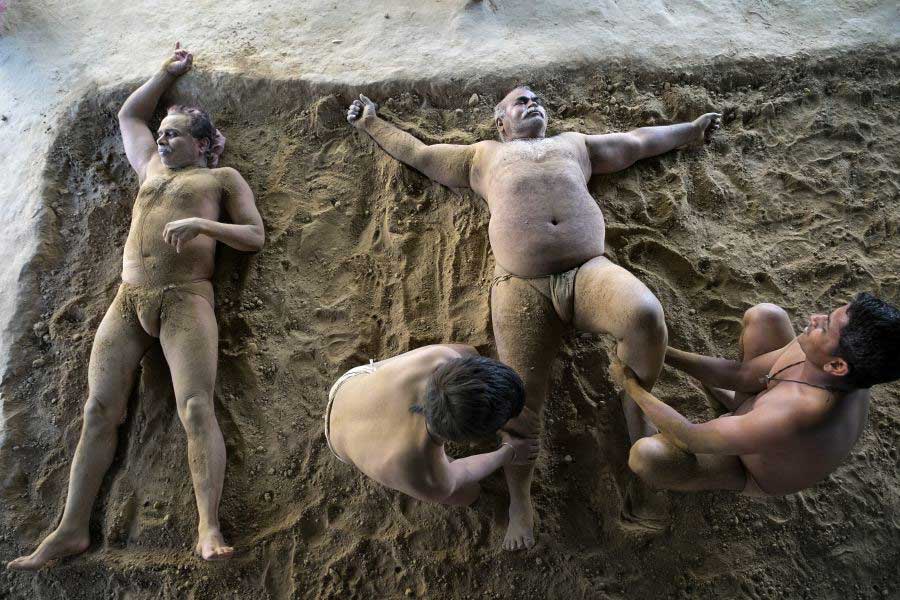
Kushti is more than traditional Indian wrestling. It is a way of life that perpetuates a tradition where every encounter is a spiritual quest. More than a sport, it is above all a lifestyle that requires rigorous discipline as in all martial arts.
For long periods (between 6 – 12 months), wrestlers in training dedicate their bodies and souls to Kushti. Living at the Akhara, training begins with mastering self-control and learning to respect others which brings great pride and glory to practitioners of the sport. Wrestlers are bound by extremely strict rules, training 365 days a year even in the summer when temperatures reach 40°. Up at 5am to workout till 8-9am, then they break until 4pm when for the next 2 hours, skirmishes in the arena start up again. A cold shower outside with a simple hose or bucket over the head follows. Dietary rules are specific: essentially, almonds, milk, ghee and chapatis (traditional bread). Younger boys (7 -8 years old), new recruits and beginners handle all the peripheral services necessary for the smooth running of the Akhara where everyone lives. During the monsoon, they sleep together under large mosquito nets erected around the pit.
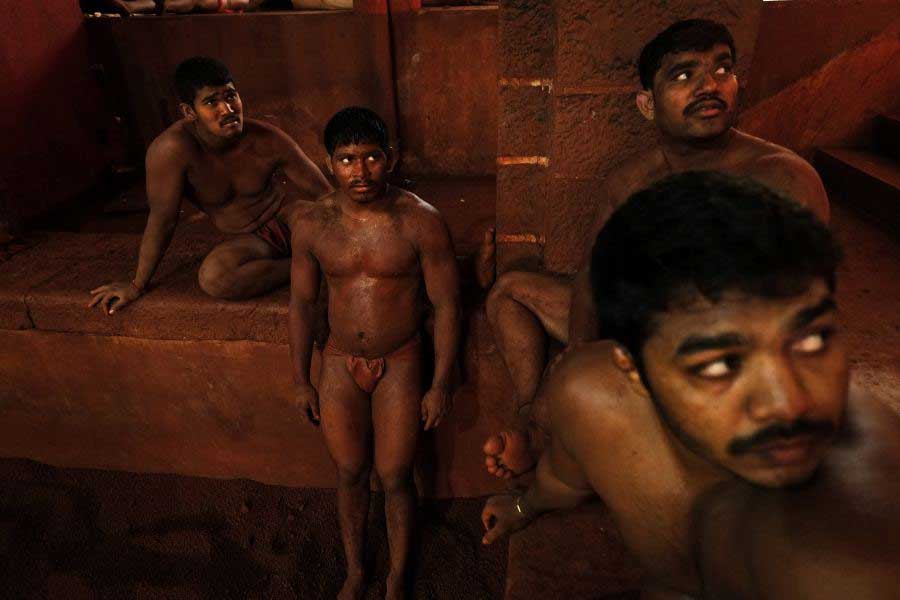
This spartan existence aims to awaken the sense of self and role in the world. Participants exert themselves physically but also on a moral, spiritual and social level. From the moment they enter the Akhara, the sacred arena, strip down and coat their bodies with clay, they become all equal. Here, there are no castes. Wrestlers of all ages and professions co-habitate. Sons of prosperous families, peasants, businessmen,… The hierarchy is built solely on strength and capabilities, yet physical strength is not a goal, but rather a means to control muscles as well as the soul.
At the end of a workout, wrestlers rest against the walls of the arena covering their heads and bodies with earth to soak up any perspiration and avoid catching cold. This relaxation ceremony is completed with massages to soothe tired muscles and demonstrate mutual respect. These massages, which require close contact between the men, create an atmosphere of social unity while the earth of the Akhara tones the organism and prevents illness. Living together promotes camaraderie, solidarity and fraternity in this universe where time has stood still.
Today, the practice of Kushti is in decline in India as youths are drawn away from traditional practices to global sports like football and cricket. Kolhapur and Varanasi are one of the few cities where the sport remains popular and where during the season, competitions are frequently organized. Kushti is also practiced in Iran, Pakistan, Afghanistan and in another form in Turkey and Africa.
